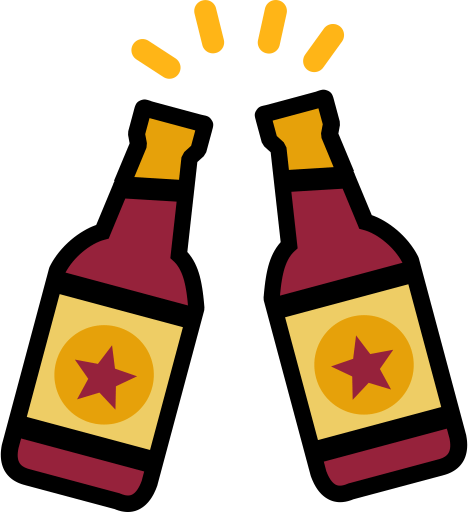Hello, I have made several batches of mead and I really enjoyed it. How much of a difference is there with mead vs cider?
Depends on your meadmaking technique, but the process is likely pretty similar. Apple juice, like honey, is low in assimilable nitrogen, so you’ll want to add a nitrogen source (DAP, fermaid, generic nutrients, etc). It is high in sulphur containing compounds, which the yeast will use in lieu of nitrogen, so if your nutrient levels are too low, you’ll know from the smell. The lower gravity of apple juice also means the yeast will be less stressed, so you won’t need to age nearly as long to get a drinkable product. Also, I find a neutral ale yeast to be preferable to a wine yeast, like Nottingham or safale S-04.
This is good advice all round. Just wanted to add that I find that Belle Saison makes a delicious cider with quite a bit more complexity than any of the wine yeasts typically do. Especially if you are going to carbonate the cider
Interesting, I’m not too familiar with that yeast. I’m looking at lallemand’s page for belle saison and noticed this
Saccharomyces cerevisiae var. diastaticus strains are capable of utilizing some types of dextrins. Extra care should be taken to ensure proper cleaning procedures are in place to avoid any cross-contamination with other brews.
Any issues with that in your experience, or do you just use dedicated equipment with it?
In regards to using dedicated equipment, if your cleaning and sanitizing practises are good it shouldn’t be a concern. Since it is a yeast not a bacteria, even if you don’t perfectly sanitize your equipment it will usually get massively out-competed by the yeasts you pitch in future batches since those cell counts are much much higher. The best thing you can do with brewing is taking good notes of every batch. That way you can see if your beers are finishing lower than expected.
The main concern with diastaticus yeasts is a lower than expected terminal gravity. Diastaticus yeasts are capable of producing amyloglucosidase which can break down the unfermentable sugars that contribute to final gravity in beer. Since mead and cider (and other fruit wines) are mainly fully fermentable sugars to begin with, diastaticus yeasts aren’t really a concern.
Diastaticus is more of a concern for breweries if it gets into batches where it wasn’t planned for and continues to lower the final gravity due to the introduction of glucoamylase. If the product is packaged to soon it will lead to very bad outcomes with bottle/cans blowing up.This has even caught some very large breweries (Left Hand vs. White Labs comes to mind) but has more often happened at smaller breweries in the last couple of years. Not a fun experience - I know from first hand experience.
Yes! I second that yeast along with the Windsor British Style Ale Yeast. Had a pack and decided to try it out and it turned out pretty damn good.
Minimal. The only real difference is that the juice you make cider from is already at the right concentration to brew unless you’re buying concentrates, so you won’t have to worry about water treatment or anything like that. You already know how to measure gravity and calculate abv (or you don’t care). Add-ins like hops or herbs work the same. You should be able to transition pretty seamlessly to ciders and even wines. It’s beers that can be a bit more difficult and involved because they have a cook step.
Combine them! Make a ciser; they’re fantastic and significantly higher ABV than traditional ciders.






